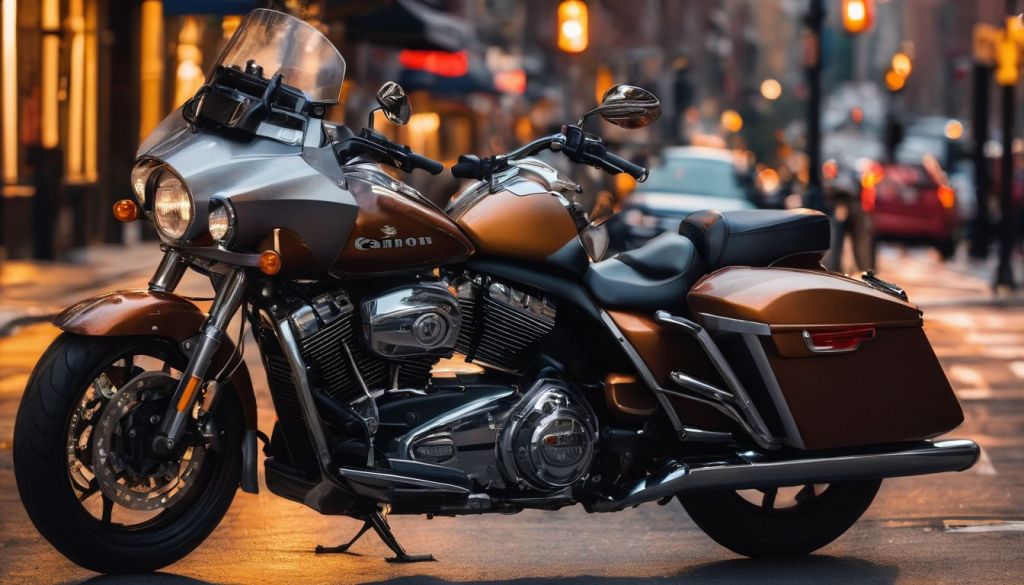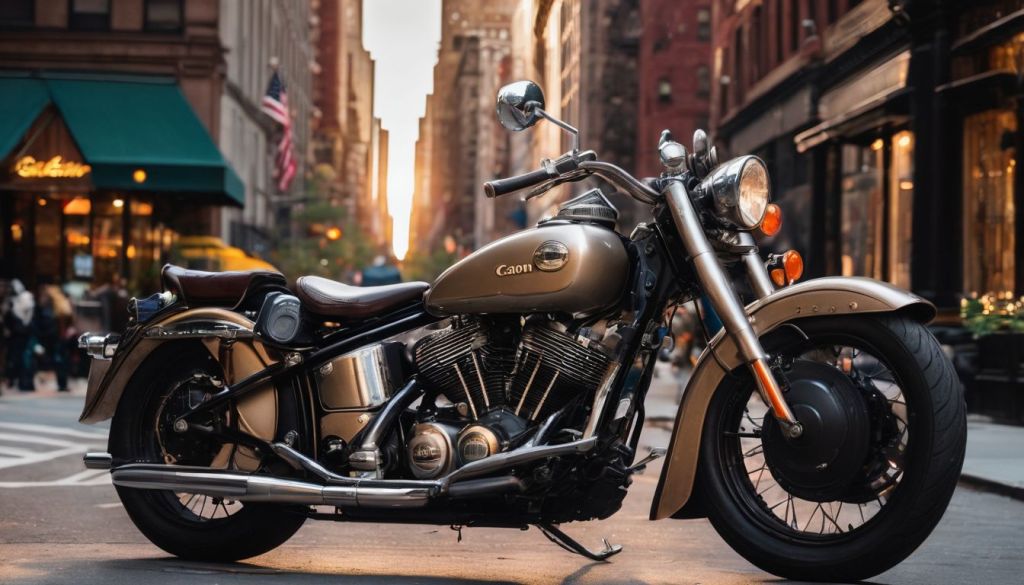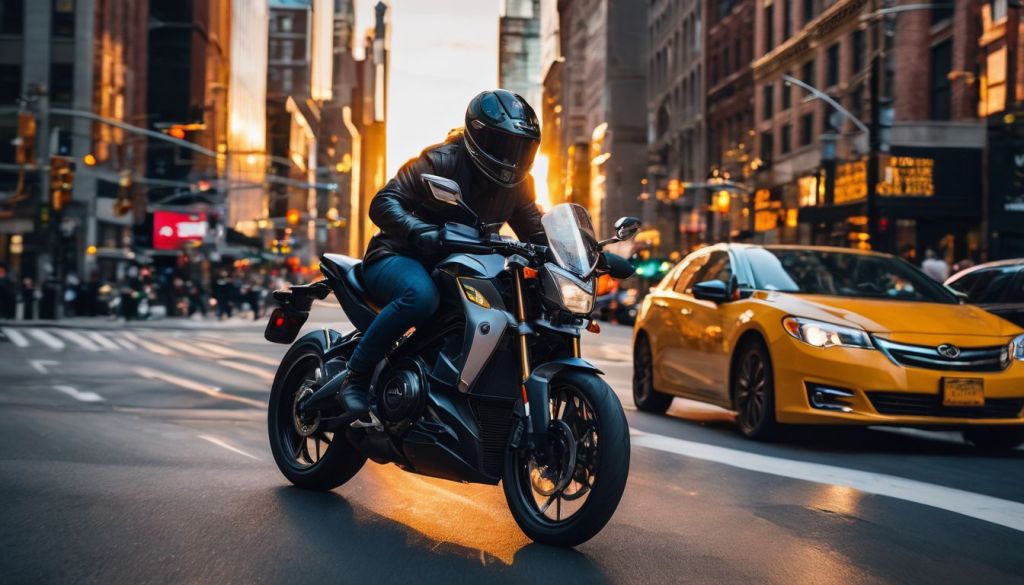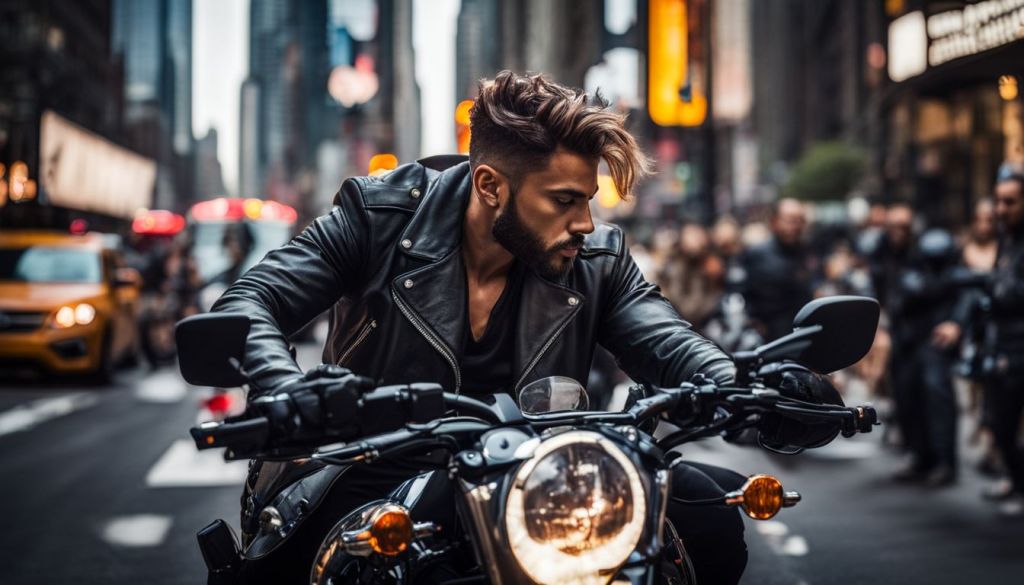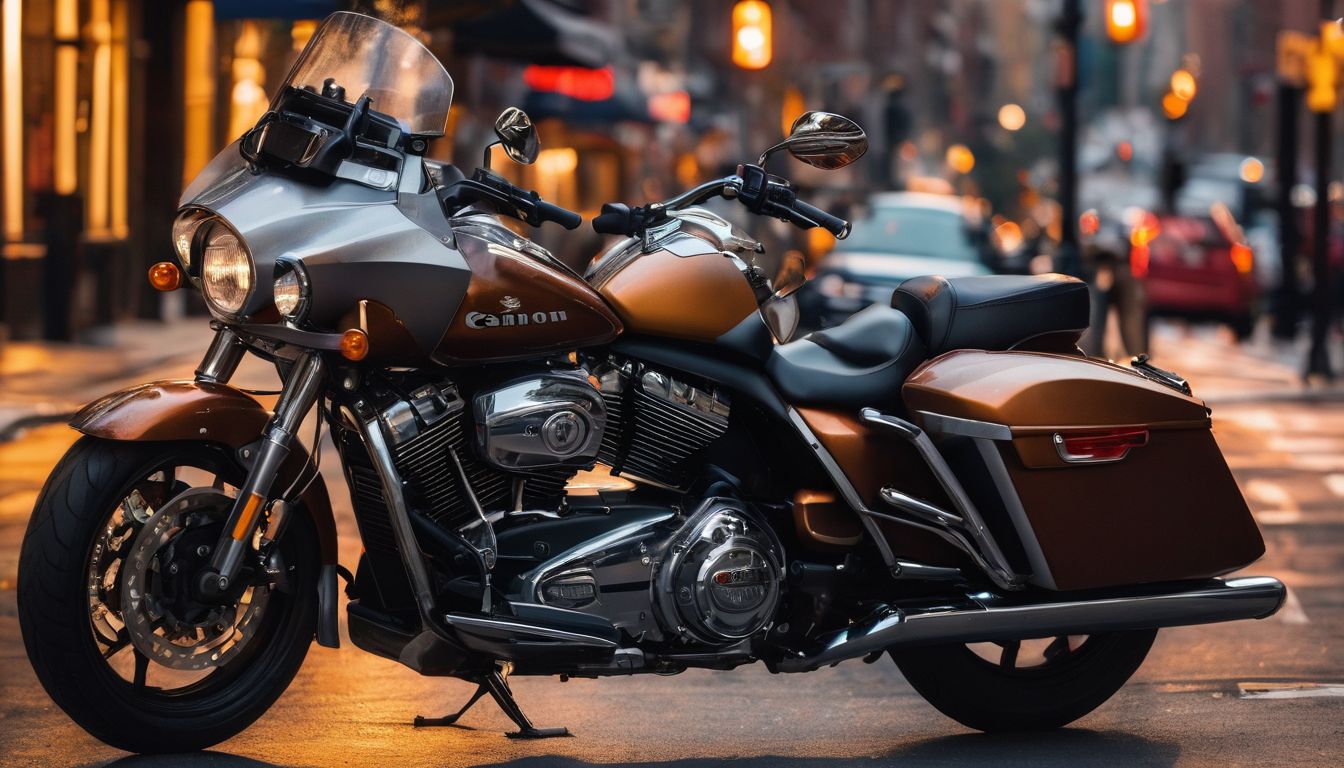
Navigating the bustling streets of New York City requires more than just a keen sense of direction—it demands a thorough understanding of the rules that govern those asphalt pathways.
Particularly for motorcycle enthusiasts, the sprawling urban landscape presents unique legal considerations that must be heeded to ensure both safety and compliance. As an experienced motorcyclist with in-depth knowledge of New York’s traffic laws, I’m here to guide you through the intricacies of motorcycle regulations in this iconic city.
The stakes are high when it comes to abiding by these laws; failure to do so not only poses risks on the road but also leads to serious legal repercussions. It is crucial to be aware that all riders are required by law to don helmets—a clear testament to New York’s commitment to rider safety.
Dive into this article for key insights on how best to stay within legal lanes while enjoying your two-wheeled travels through The Big Apple. Keep reading for essential tips you won’t want to miss.
Key Takeaways
- Motorcycle riders in New York City must have a Class M or MJ license, and wearing helmets that meet USDOT standards is mandatory for both the rider and passenger. Riders under 18 must complete a driver education program.
- The ‘No Chase Law’ prohibits high – speed police pursuits of motorcyclists for traffic violations to prevent dangerous chase scenarios, prioritizing public safety over immediate enforcement.
- Violations such as not having the proper license or helmet can lead to fines, points on your driving record, and possible suspension of driving privileges. Lane splitting is illegal in New York and could result in misdemeanor charges.
- Comparative negligence in motorcycle accidents means if you’re at fault partly, your compensation might be reduced by your percentage of fault. Not wearing an approved helmet during an accident may decrease injury claims even if another party is mainly responsible.
- Knowledge of New York’s motorcycle laws helps ensure safety on the road and protects riders from potential legal issues. Remembering these regulations can make each ride more secure while preserving legality within busy city streets.
Basic Motorcycle Laws in New York

In New York City, motorcycle riders must navigate a web of specific legal provisions designed to ensure both their safety and that of others on the road. From stringent licensing rules to mandatory helmet usage, these foundational regulations form the bedrock of responsible motorcycling in the bustling urban environment.
Licensing Requirements
To ride a motorcycle in New York, you must obtain a Class M or Class MJ license. This requirement ensures that all riders have demonstrated the necessary skills and knowledge to safely operate a motorcycle on busy city streets.
An individual with an out-of-state or foreign motorcycle license is legally permitted to drive a motorcycle in New York City, providing flexibility for visitors and new residents.
Securing the right licensing calls for completing an application at the Department of Motor Vehicles (DMV). Alongside this formal paperwork, aspiring motorcyclists may need to pass written tests, road tests, and possibly take part in safety education courses.
For those under 18 years old seeking their first license, New York mandates completion of a driver education program or pre-licensing course. Motorcycle safety classes not only prepare riders for the road but can also provide them with valuable strategies to avoid accidents.
The process of getting licensed underscores the state’s commitment to motorcycle safety regulations and legal compliance on its roads. With proper documentation and adherence to these guidelines, riders contribute to safer travel environments for everyone navigating New York’s diverse transportation landscape.
Helmet Regulations
Motorcyclists in New York must always wear helmets, and this rule applies to both drivers and passengers. These helmets need to meet the safety standards set by the US Department of Transportation (USDOT).
The law is clear: No one can ride a motorcycle without a helmet that has USDOT approval. This requirement is about more than just following rules; it’s about protecting lives. Every year, helmets save riders from serious injuries when accidents happen on city streets or busy highways.
Choosing the right helmet makes all the difference for motorcyclists’ safety. Riders should look for labels confirming that their helmets are compliant with federal regulations before hitting the road.
It’s not only smart but also mandatory under New York State Vehicle and Traffic Law Section 381(6). Failing to do so could end up with legal consequences, including fines or worse if an accident occurs.
Understanding these requirements ensures you’re prepared before you rev your engine and zoom off into traffic. Next up, let’s dive into why wearing a helmet isn’t just law – it’s critical for your safety on two wheels.
Understanding New York’s Motorcycle Safety Laws
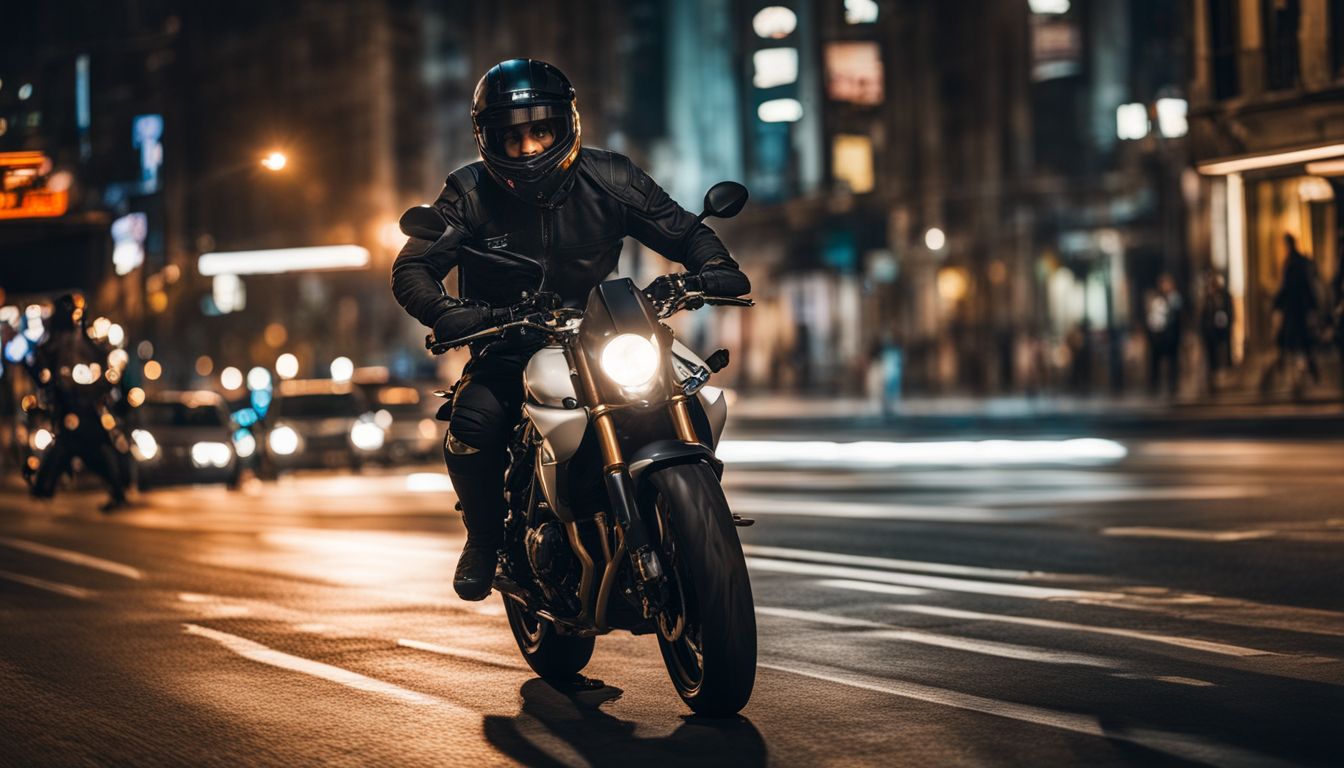
3. Understanding New York’s Motorcycle Safety Laws:.
Diving into the heart of motorcycle safety regulations, it is crucial for riders to not only comply with New York’s stringent helmet laws but also to understand the protections afforded by unique policies like the No Chase Law.
These measures are designed not merely as legal formalities but as fundamental provisions that safeguard motorcyclists on the bustling streets of New York City.
Importance of Wearing a Helmet
Wearing a helmet while riding a motorcycle in New York is not just a good idea, it’s the law. Helmets save lives by protecting riders’ heads during crashes and reduce the risk of serious brain injuries.
Every motorcyclist and their passenger must have helmets approved by the US Department of Transportation (USDOT), according to New York State Vehicle and Traffic Law Section 381(6).
This requirement applies regardless of a rider’s experience or skill level.
Choosing to ride without proper head protection can lead to tragic consequences and legal repercussions. Safety education in New York emphasizes the vital role helmets play in reducing fatalities on the road.
As such, investing in an approved helmet is crucial for anyone seeking to enjoy motorcycle journeys within this bustling cityscape, ensuring compliance with traffic laws designed for their well-being.
Next up: understanding how New York’s No Chase Law affects motorcyclists on these busy streets.
No Chase Law for Motorcycles
New York’s approach to motorcycle safety takes an unexpected turn with its “No Chase Law.” Police officers are instructed not to engage in high-speed pursuits of motorcyclists for traffic violations.
This policy aims to prevent the potential dangers that come from chasing motorcycles at high speeds, which can lead to serious accidents and endanger the lives of the rider, the police, and the public.
Officers instead focus on alternative methods to enforce traffic laws among motorcyclists. These techniques prioritize safety while still addressing violations. The law reflects an understanding that the risks involved in pursuing a speeding motorcycle often outweigh the benefits of immediate apprehension for minor infractions.
Motorcyclists should know this doesn’t give them free rein to ignore traffic rules; it’s a measure meant to safeguard all road users’ wellbeing in New York City’s bustling streets.
Motorcycle riders are encouraged to continue practicing responsible driving habits despite this regulation. Adhering strictly to helmet requirements and licensing regulations remains crucial.
It is essential for riders’ personal security and compliance with state laws governing motorcycle use on city roads.
Legal Consequences of Violating Motorcycle Laws
Riding a motorcycle without following New York’s strict laws can lead to severe penalties, impacting not just your wallet but also your driving privileges. For instance, if you’re caught without a Class M or MJ license as required by the DMV, expect hefty fines and points on your driving record.
This could escalate to a suspension of your right to drive any motor vehicle in the state. Should you decide to ride without an approved helmet for yourself or a passenger, both safety and legal risks climb – tickets issued can carry substantial financial consequences.
Engaging in lane splitting is another violation that New York law takes seriously; committing this act can result not only in fines but also potential traffic misdemeanors depending on the situation’s severity.
Each infraction adds points to your license and accumulating too many may even lead to its revocation. It’s essential for riders within New York City’s bustling streets and beyond—they must adhere strictly to these regulations designed for their protection—and understand how non-compliance may severely compromise both their physical well-being and legal standing.
The next section will delve into how comparative negligence might affect responsibility determinations in motorcycle accidents.
The Role of Comparative Negligence in Motorcycle Accidents
Understanding the potential penalties for disregarding motorcycle laws sets the stage for delving into comparative negligence. This legal concept applies when a motorcycle accident occurs, and both parties have contributed to the cause of the accident.
In such cases, New York’s comparative negligence system evaluates each party’s level of fault.
The principle is straightforward: if you’re involved in a motorcycle crash and found partly at fault, your compensation may be reduced by your percentage of responsibility. For example, suppose you were speeding marginally over the limit when another driver made an illegal turn and crashed into you.
If authorities determine that you are 20% at fault due to speeding, any damages awarded to you would reflect this deduction.
Motorcycle safety regulations require riders to wear helmets approved by USDOT—failure to do so can significantly impact your claims under comparative negligence rules. Consider someone who sustains head injuries from an accident while not wearing a helmet; even if another party is mostly responsible, courts might decrease the victim’s compensation because their lack of helmet increased the severity of their injuries.
Navigating through traffic laws effectively demands knowledge about how these rules play out on NYC streets post-accident. Adhering closely to motor vehicle laws before any incidents ensures better standing within New York state laws after accidents occur.
Accidents happen quickly yet proving adherence to motorcycle highway regulations could stand in one’s favor during litigation influenced by comparative negligence arguments.
Conclusion
New York City’s streets pulse with the energy of countless vehicles, and motorcyclists must ride with a keen sense of awareness. Mastery over local motorcycle laws not only ensures safety but also shields riders from legal troubles.
Commit these rules to memory; let them guide every journey on your bike through the cityscape. Knowledge arms you against hazards and keeps your riding experience within the embrace of the law.
Ride smart, stay safe, and make New York’s roads better for everyone on two wheels.
FAQs
1. What do I need to legally ride a motorcycle in New York City?
You must have a valid motorcycle license, registration, insurance, and wear an approved helmet.
2. Are there any specific laws about lane splitting for motorcyclists in New York City?
Yes, lane splitting is illegal in New York City; motorcyclists must follow the same traffic rules as other vehicles.
3. Do I have to wear a helmet while riding a motorcycle in New York City?
Yes, both drivers and passengers are required by law to wear USDOT-approved helmets when riding.
4. Can I park my motorcycle on the sidewalk in New York City?
No, parking your motorcycle on sidewalks is not allowed; you must use designated motorcycle parking or regular vehicle spaces.
5. Is it mandatory to have eye protection while driving a motorcycle in New York City?
Yes, state law requires all motorcyclists to use eye protection unless their bike has an approved windshield.
